#gordon buehrig
Text

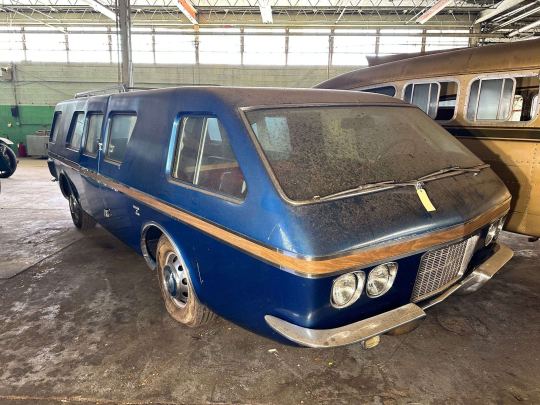
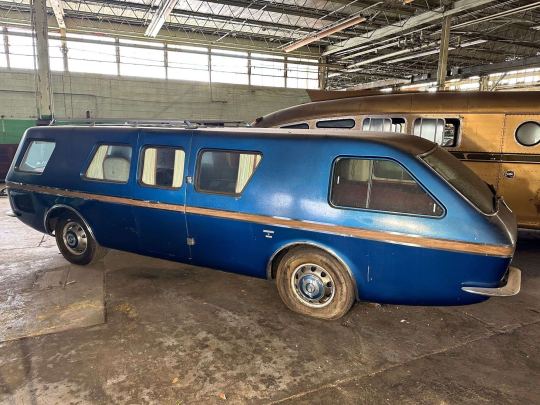






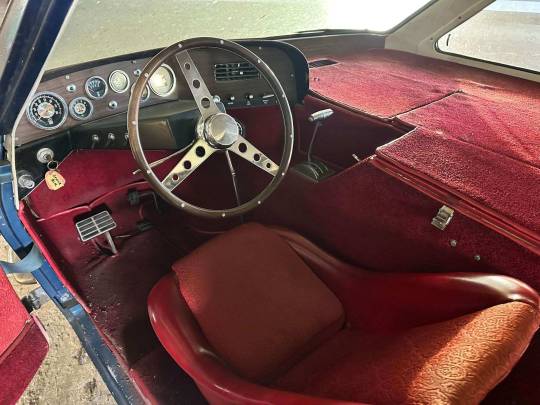
1968 Kershaw Cruiseaire
The Kershaw Cruiseaire was developed in the late 1960s as a new kind of luxury limousine and office on wheels for well-to-do businessmen. Inside it was equipped with a TV, intercom, 8 track player, a fridge, couches and armchairs, drinks cabinets, and even a stove.
The design of the Cruiseaire is said to have been the brainchild of Royce Kershaw Sr, who hired Glenn Pray to do the styling. Pray is perhaps best-known for his Cord 8/10 replicas, but interestingly he also worked with Gordon Buehrig on the Cruiseaire design. Buehrig is one of the most significant American car designers of the mid-20th century.
The Cruiseaire is based on the chassis, running gear, and drivetrain of a 1968 Oldsmobile Toronado. The project started with a brand new Toronado onto which the new body was fitted, and it’s still powered by the Toronado’s 425 cubic inch V8, sending power through an automatic transmission to the front wheels.
The Kershaw Cruiseaire concept vehicle was developed in the late 1960s by Royce Kershaw Sr as a completely new form of vehicle – a cross between an RV and a luxury limousine targeted at wealthy businessmen and celebrities who wanted something more than your standard, run-of-the-mill limo.
Images courtesy of Auction by Pearce and the Kershaw Estate
#art#design#luxury cars#luxury car#vr#limo#limousine#cruiseaire#gordon buehrig#oldsmobile#vintage cars#vintage car#luxury lifestyle#kershaw estate#toronado#royce kershaw Sr#barn find
154 notes
·
View notes
Text

Auburn 851 Supercharged Boattail Speedster 1935 design Gordon Buehrig. - source Eric Donaldson.
142 notes
·
View notes
Text
Gordon Buehrig Exceptional Design Highlights
Gordon Buehrig is credited with designing several iconic automotive models. Some of the notable ones include:
Auburn Speedster 851 and 852 (1930s): Buehrig’s work at Auburn resulted in the creation of these sleek and distinctive speedsters, known for their stylish design.
Cord 810 and 812 (1930s): He played a key role in the design of the Cord 810 and 812 models, featuring groundbreaking…

View On WordPress
#Auburn 851 Boattail Speedster#Auburn 852#Auburn Boat Tail#Auburn Speedster#coachbuilt.com#Cord 810#Cord 812#Duesenberg#Ford Motor Company#GM#Gordon Buehrig#Model J#Wikipedia
2 notes
·
View notes
Text
Deco Doings - April, 2023
Spring by William Welsh, 1930. Image from Pinterest.
Plattsburgh State Art Museum
Origins: The Evolution of an Artist & His Craft, Selections from the Rockwell Kent Collection (In Person Event)
Tuesday, November 8, 2022 – Friday, August, 11, 2023, 235 Myers Fine Arts, 101 Broad Street, Plattsburgh, NY. Museum Hours: Tuesday – Sunday Noon – 4:00 PM (EDT).
Vero Beach Museum of Art
Rolling…

View On WordPress
#AFI Silver Theatre and Cultural Center#Alameda Masonic Hall#Alan Leamy#Art Deco Society of California#Art Deco Society of Los Angeles#Art Deco Society of New York#Art Deco Society of Washington#Art Deco Society of Washington Film Club#Auburn Cord Duesenberg Automobile Museum#Florida#Gordon Buehrig#International Coalition of Art Deco Societies#Los Angeles Central Library#Miami Beach#Miceli&039;s Hollywood#Silberberg Building#Up in Mabel&039;s Room#World Congress on Art Deco
0 notes
Text
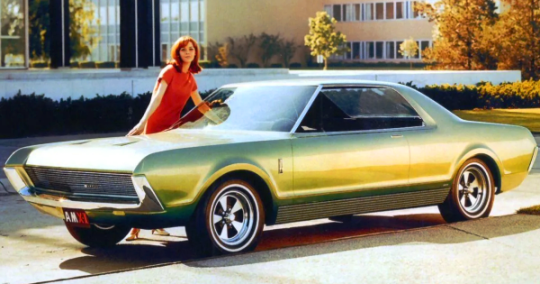
Outside the AMC Box: 1966 American Motors AMX II Concept
Posted on March 19, 2024 by MCG
To create the AMX II, AMC design chief Richard Teague reached outside his own styling studios and brought in independent designer and builder Vince Gardner.
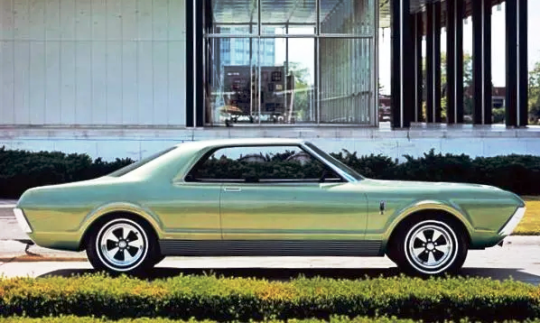
In his long tenure as vice president of design at American Motors from 1964 to 1983, Richard A. Teague earned a reputation for working outside the box. This constant drive to be different could be seen, for example, in the four Project IV concept vehicles his design staff prepared for a 1966 promotional tour, with displays in six major American cities. For one of the Project IV cars, the AMX II, Teague reached outside the box a little further and brought in an independent designer, Vincent E. Gardner.

Among car designers, Vince Gardner had a remarkable skill set. In addition to being a talented stylist, he was also a highly capable clay modeler and fabricator. As a kid fresh out of high school, he prepared the clay model for the 1936 Cord 810, working alongside designer Gordon A. Buehrig. His own design credits include the 1947 Gardner Special, the 1953 Vega sports car, and the 1964 Mustang III, while the 1962 Thunderbird Italien and 1968 Dodge Charger III are among the concept vehicles he constructed for the automakers.
While the AMX II was Gardner’s creation, it didn’t look at all out of place among the other three Project IV concept vehicles, integrating nicely. (See our feature on the Project IV Cavalier here.) According to the American Motors press materials, the AMX II was intended to expand on the theme of the AMX sports car concept, which made its public debut in the Project IV program
Eight inches longer than the AMX, the AMX II included room for four passengers and a generous trunk. (AMX stood for American Motors eXperimental.) Though it almost doesn’t look it, the wheelbase was a full 110 inches, with a shape that could remind you of the 1967 Mercury Cougar, though it’s slimmer, less chunky.

Features included hidden headlamps and windshield wipers, while an automated circuit locked the doors when the AMX II was moving. At the rear was was a safety tail lamp arrangement with green, yellow, and red segments for driving, slowing, and braking. However, it seems many of these features probably existed only on paper.
Like the other Project IV cars, the AMX was not a running vehicle, but merely a fiberglass studio glider with no drivetrain or running gear. There was no real interior, either, only a black sillhouette panel inside, just under the beltline, to fill the cabin volume. Like so many pushmobile show cars, the AMX II served no real function once its display career was concluded, so it was more than likely scrapped soon after.

47 notes
·
View notes
Photo
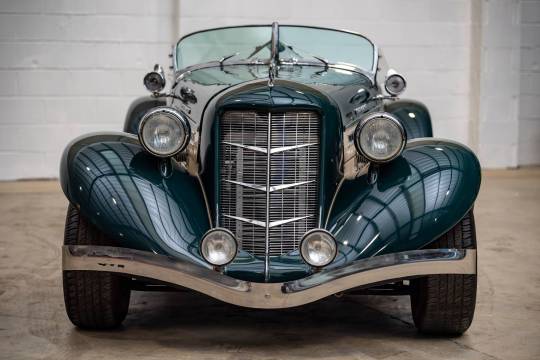



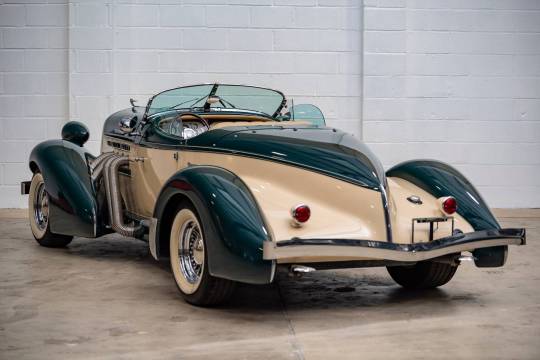


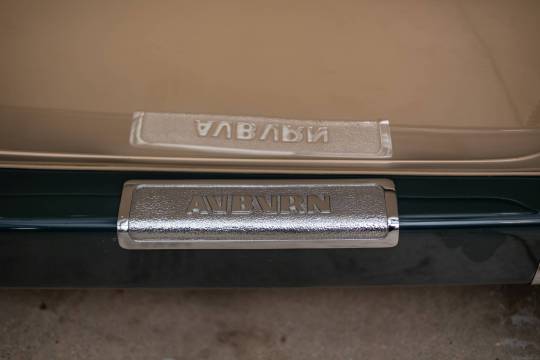

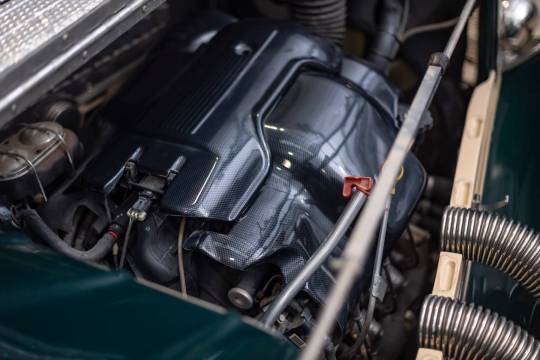
Auburn 851 Boat Tail Speedster (Replica)
The Auburn Automobile Company grew out of the Eckhart Carriage Company in Auburn, Indiana. Founded in 1874 by Charles Eckhart, a flourishing carriage business was forged by the time he handed the reins over to his sons Frank and Morris. Seeing the writing on the wall for the horse and buggy, the brothers Eckhart went into the car business in 1900. The following years saw some great automobiles leave the Indiana-based works, both in eight and twelve cylinder form, but the true icon would come in late 1934.
Penned by Gordon Buehrig, the young designer who had mastered designs for Stutz and Duesenberg, the 851 Boat Tail Speedster could be considered his masterpiece.
The 851 Speedster was the first stock American car to exceed 100 mph for twelve hours. In fact, all 851 Boat Tail Speedsters were guaranteed to exceed 100 mph in stock form. Its performance was astonishing, but the car is mostly remembered for its styling; it is undeniably one of the most striking and unforgettable designs of the 1930s.
Today, originals are today both rare and very expensive. Hence the market for replicas and recreations.
Of the numerous small companies that have built replicas, Speedster Motorcars is considered to be a manufacturer of particularly high-quality examples.
Based in Florida, the company’s reputation was built on the extensive experience founder Michael Atkins acquired over several decades of constructing replica Auburns.
He finally created an aesthetically faithful but mechanically modernized Boat Tail Speedster in the early 2000s.
Featuring reliable V8 Chevrolet engines, the cars offered power brakes and steering, plus automatic transmission cunningly disguised as a manual.
278 notes
·
View notes
Text
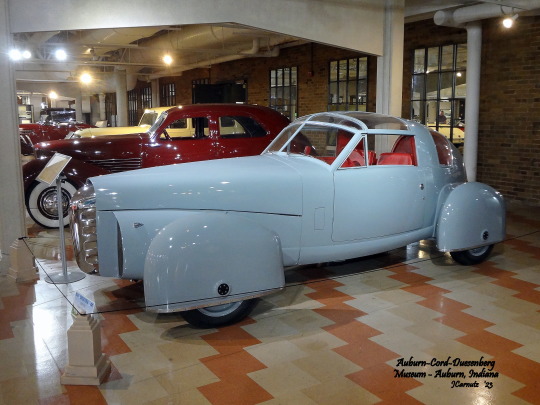


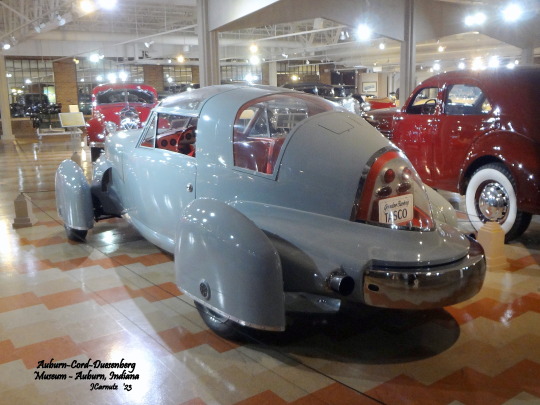
1948 Tasco - Prototype
Taken at the Auburn Cord Duesenberg Museum - August 2023
A group of investors wanted to build a suitable American sports car for a European type racing event to be held at Watkins Glen, New York. Gordon Buehrig was part of the group of investors, and he also performed the design work. He oversaw the production of this single prototype vehicle.
The aluminum body was built by the Derham Body Company of Rosemont, Pennsylvania. It was the first car in the world with a T-top roof, an idea that Gordon Buehrig patented. He later sued General Motors for infringement when the 1968 Corvette came out with a T-top roof.
The front fenders of the Tasco are made of fiberglass and the roof panels are Plexiglas. The name Tasco stands for “The American Sports Car Company”.
SPECIFICATIONS
Model: Prototype
Wheelbase: 110 inches
Engine: Mercury V-8
Transmission: Three speed manual
Displacement: 239 cubic inches
Horsepower: 150
19 notes
·
View notes
Text

1937 Duesenberg SJ - James Deneen
This boal-lail speedster, built by Weymann to a design of Gordon Buehrig, was one of only 36 SJ models produced by Duesenberg. It was owned by George Whittell of Woodside, California, along with five "J" model Duesenbergs. An honorary fire marshall, Mr. Whittell had a siren and red light specially installed, although he rarely drove the SJ because its striking appearance attracted so much attention. When the car was acquired by Harrah's Automobile Collection, the odometer registered only 1,432 miles, and the car still had its original tires, paint and upholstery.
17 notes
·
View notes
Text



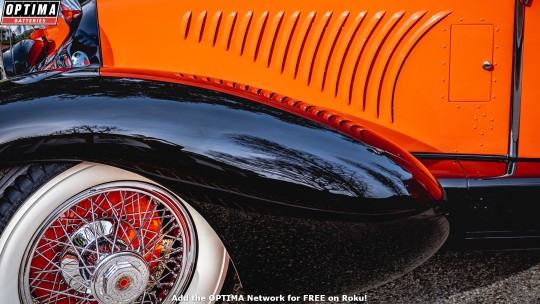



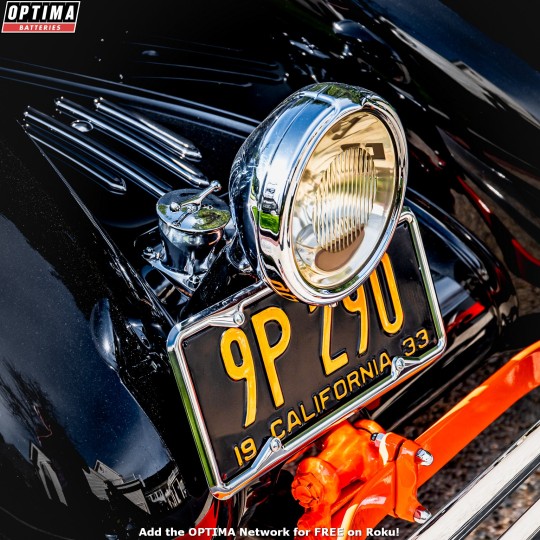
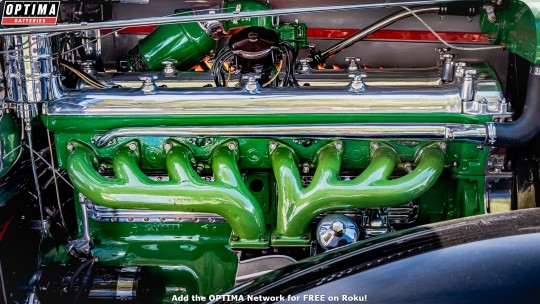
The Lyon Automobile Collection, which is powered by OPTIMA Batteries, is regarded as one of the finest in the world and additional proof of such took place on Sunday, April 23, 2023 at the prestigious LaJolla Concours d’Elegance where the Lyon Collection’s 1931 Weyman “TaperTail” Duesenberg speedster was awarded Best of Show. Duesenberg was the featured marque of the Concours and so the best Duesenbergs from around the globe were assembled with the Lyon '31 Weyman winning the top honor.
The Lyon Collection is particularly known for its large and unsurpassed collection of Duesenbergs. The Best of Show ’31 Weyman, serial #2450/engine J-437, was designed by no less than Gordon Buehrig and initially purchased by Walter Varney, who co-founded airlines that would come to be known as United and Continental. The Lyon ’31 Weymen has one numerous Concours awards and this latest addition is proof again that the finest cars in the world are powered by OPTIMA Batteries. See more of this incredible car here.
9 notes
·
View notes
Text
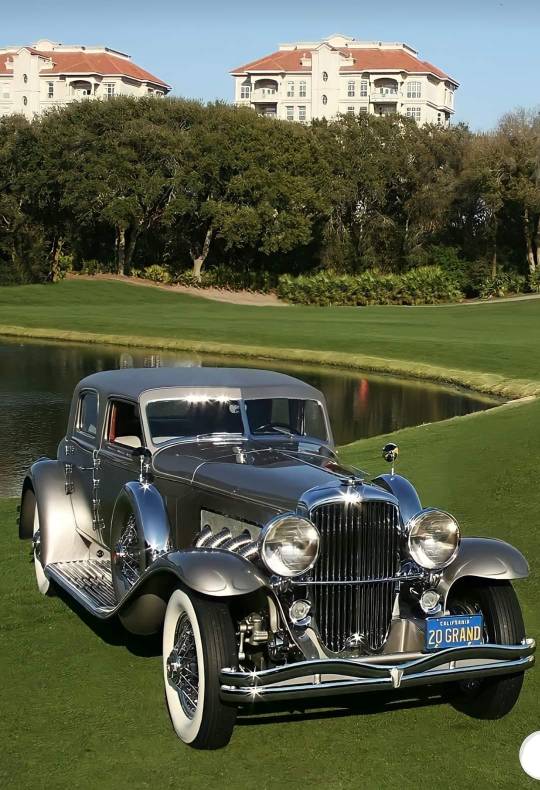
The Ten Most Beautiful Cars in the World. 1933 Duesenberg SJ Arlington Torpedo Sedan body by Gordon Buehrig
3 notes
·
View notes
Photo

Auburn 851 Speedster 1935 design Gordon Buehrig. - source Mary Tampakopoulou.
123 notes
·
View notes
Photo

1934 Auburn Boattail Speedster Fue un automóvil estadounidense, fabricado por Auburn Automobile Company de Auburn, Indiana y fabricado en Union City, Indiana . Se fabricaron un total de 887 automóviles entre 1928 y 1936, en 3 series (1928-1930 con motores "ocho" y "ocho grandes", la serie V12 de 1931 a 1934 y el dramático e icónico Supercharged 8 de 1935-36). Las dos primeras series fueron diseñadas por el estilista Alan Leamy. El Auburn 851 Speedster de 1935 fue diseñado por el diseñador Gordon Buehrig , quien también fue responsable del modelo Cord 810 . Al Jenkins rompió 70 récords de velocidad de Estados Unidos en el automóvil de 1935. En 1924, la producción de Auburn se redujo a seis automóviles por día, Errett Lobban Cord , un exitoso vendedor de automóviles, se hizo cargo de la empresa en dificultades y contrató a James Crawford para diseñar y desarrollar una nueva gama de vehículos. Otras compañías ya habían producido autos de "cola de bote" (Peerless, Packard, Hudson), pero Auburn se esforzó en el auto para tener una imagen líder en una línea de autos ordinaria. El Speedster tenía un parabrisas fijo, pero no ventanas laterales, ni interior. liberación de la puerta y techo opcional, una cabina estrecha para solo dos, sí, en una carrocería glamorosa y de aspecto aerodinámico.#automovil #coches #motor https://www.instagram.com/p/CjJCwUSMsucU8VFFtl0vtZKhTE3VRC7QMOPbFM0/?igshid=NGJjMDIxMWI=
0 notes
Photo



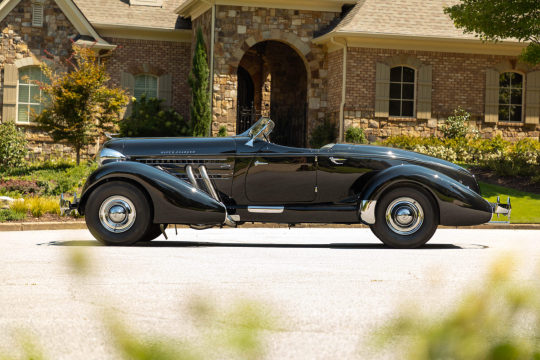
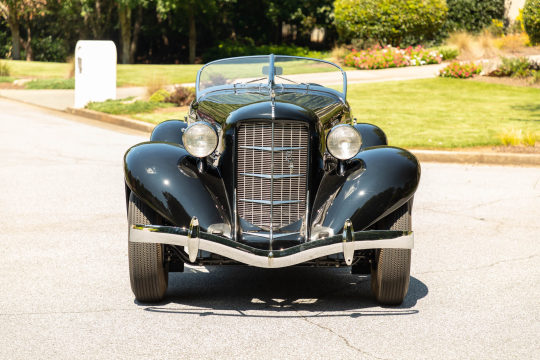





Auburn 851 Speedster
Designed by the legendary Gordon Buehrig, the Auburn Speedster is a car that’s every bit as fast as it looks thanks to its inline-eight cylinder, 4.6 liter flathead engine mated to a Schweitzer-Cummins centrifugal supercharger – total power output is 150 bhp.
The Auburn Eight Supercharged Speedster, more commonly known simply as the Speedster 851 or simply as the Auburn Boattail, was released in 1934 to universal acclaim.
Heralded as a masterpiece of automotive design, the sweeping lines and boattail rear of the car hinted at its high-speed ability.
Photo by Alex Stewart, courtesy of RM Sotheby's.
#art#design#vintagecars#vintagecar#auburn#auburn 851#speedster#supercharged#speedster851#boattail#luxurycars#luxurycar#luxurylifestyle#collectors car#rm sotheby's#alex stewart#sportcars#sportcar#gordon buehrig#1934
73 notes
·
View notes
Photo

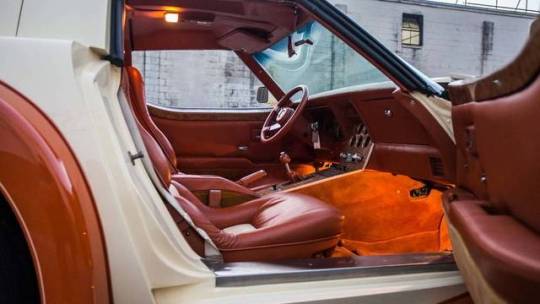
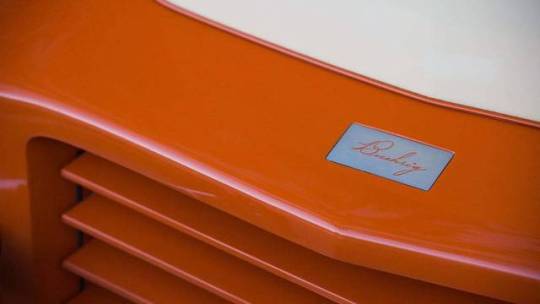




Corvette-based 1980 Buehrig Carriage-Roof coupe for sale on Hemmings.com.
114 notes
·
View notes
Photo

A 1929 Duesenberg Model J, with coupe body by the J.B. Judkins Company of Merrimac, Massachusetts, as designed by the famed Gordon Buehrig. This Duesy is unusual for having blackwall tires.
0 notes
